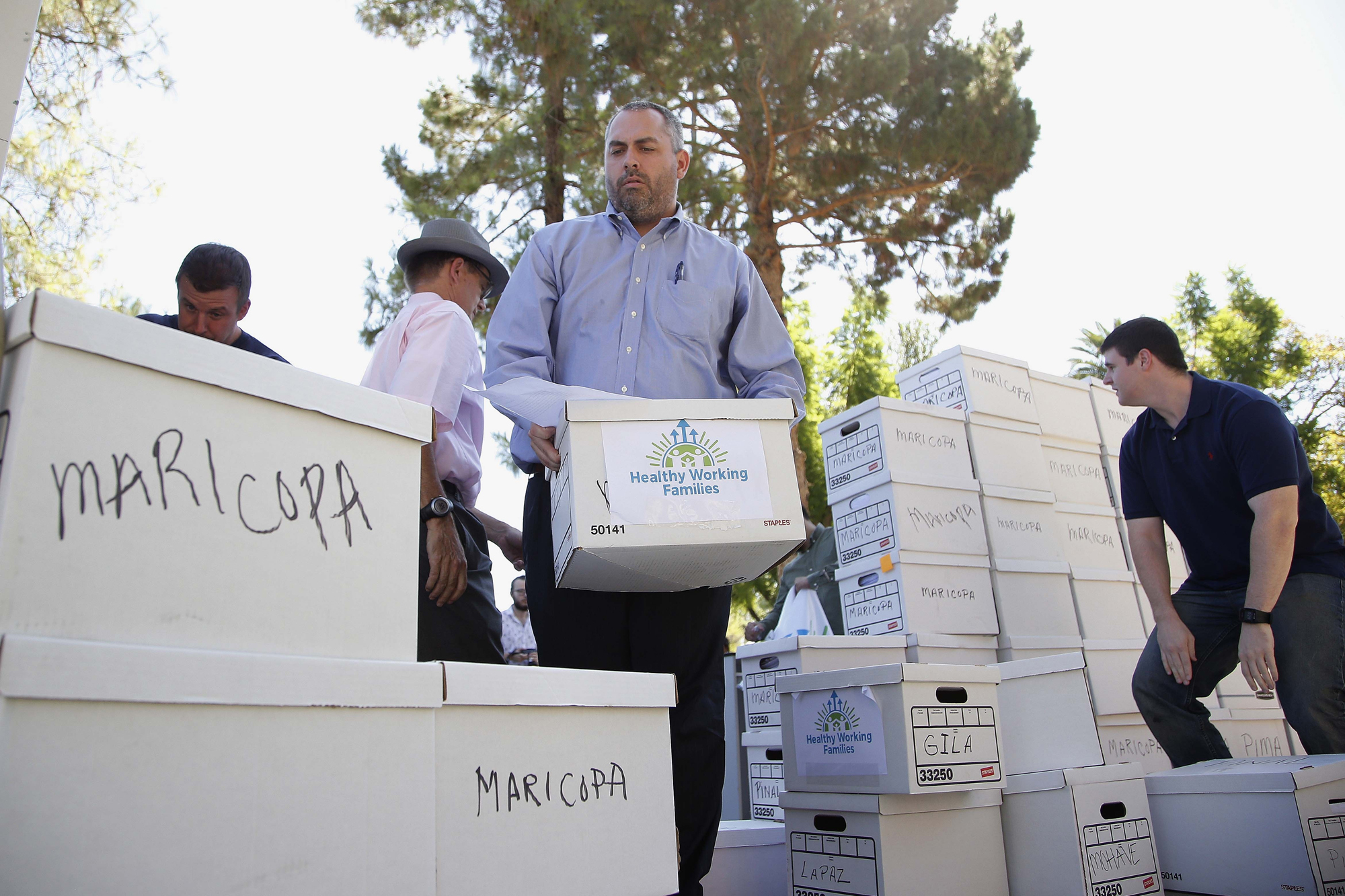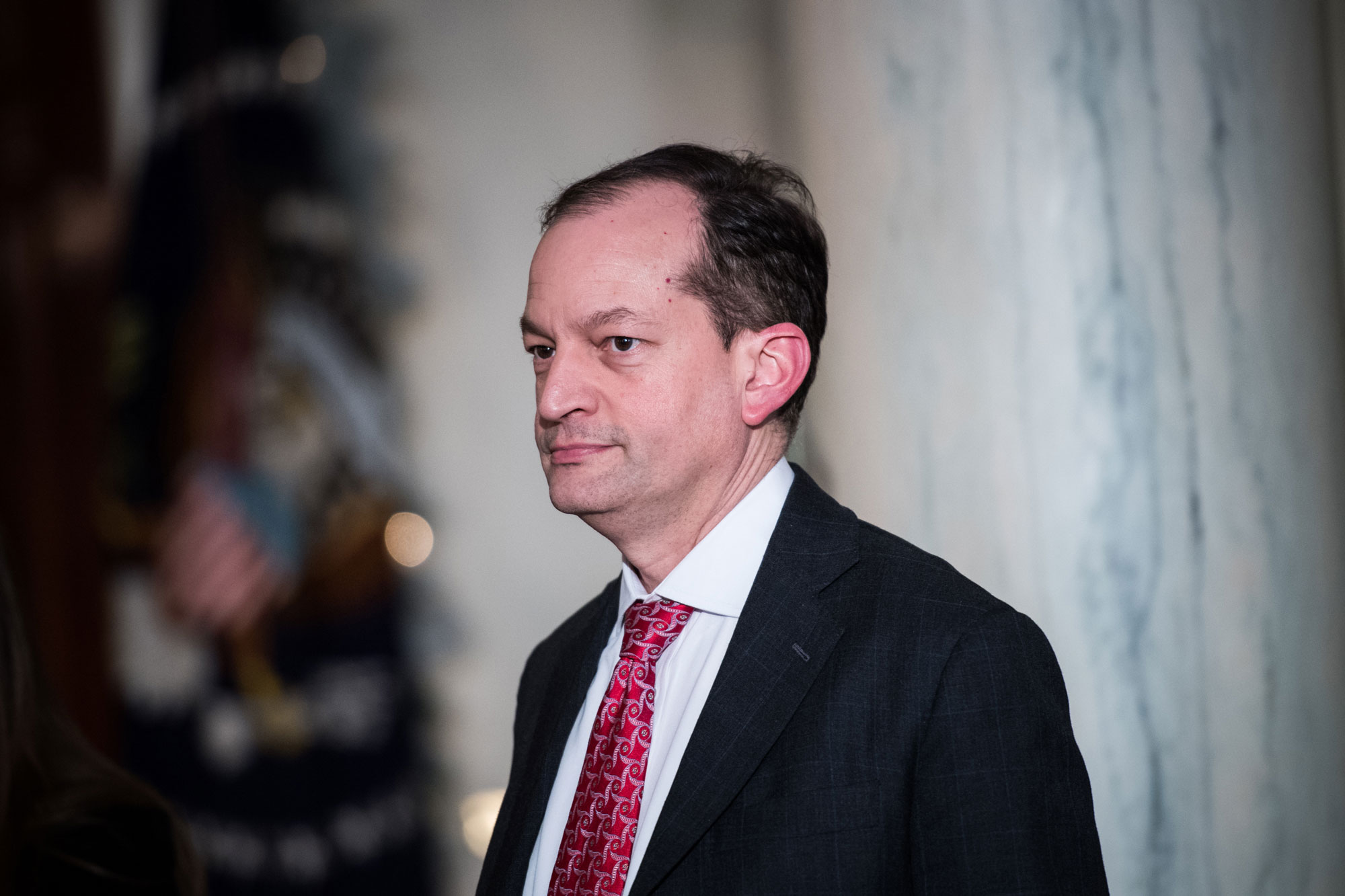Sammi Brown grew up in Charles Town, West Virginia. Raised in what she describes as a “barely 2-bedroom” apartment, she watched as both of her parents worked two, sometimes three jobs to put food on the table for her. “My dad worked second and third shifts so that he could walk me to the bus stop and be there when I got home,” she told TalkPoverty. “My mom worked multiple jobs … that’s kind of where I get my work ethic from.”
Brown became an organizer after seeing how challenging it was for her parents to provide basic necessities like food, housing, and health care when she was growing up. As a result, they often turned to programs like Medicaid and food assistance. “Eventually we did get off of those programs. We didn’t need them for my whole lifetime, but we were very much a working-class family,” she said.
Get TalkPoverty In Your Inbox
I spoke with Brown just outside The Greenbrier, a tony luxury resort in the Allegheny Mountains, where weekend rates typically range from $358.00 to $628.00. At the time, it was playing host to nearly 300 Congressional Republican lawmakers, along with Vice President Mike Pence and President Donald Trump, who were all gathered for an annual policy retreat. Brown was one of the lead organizers for a protest—helping to bring in more than 500 activists, union members, and storytellers from across the country.
Sammi Brown
Dominating discussions this year were cuts to a wide range of health, food, and housing programs—the very programs Brown turned to as a child—all in the name of “welfare reform.” Despite resistance from Senate Republicans, House Speaker Paul Ryan and the hard-right Republican Study Committee were making a Sisyphean effort to build support for a wide range of cuts this year—starting with Medicaid.
According to reports from the retreat, it all came down to messaging. “You’ve got to get the framing or the phrasing right,” Republican Study Committee Chairman Mark Walker told Politico. “When we talk about ‘Medicaid reform,’ that’s not a great buzz phrase.” Lost on Walker was the fact that the cuts themselves are unpopular, not just the salesmanship.
It was ironic that the House and Senate Republican conferences chose this site for a conversation dedicated to slashing the safety net. West Virginia has the second lowest per capita income in the country. More citizens turn to Medicaid, Social Security, and food assistance than virtually anywhere else in the country.
More than 500,000 West Virginians—nearly a third of the population—get health insurance through Medicaid, making it the state with the highest share of its population covered by the program. This includes the majority of all children in the state and more than three-fourths of nursing home residents. Congress’ proposed repeal of the Affordable Care Act, for example, would have taken away Medicaid coverage from 227,000 West Virginians by 2029—equivalent to nearly half of those currently receiving Medicaid in the state.
The state has also been ravaged by the opioid epidemic. Fatal drug overdoses in West Virginia dwarf every other state in the country. In 2016 alone, 818 people lost their lives to drug overdoses—a 400 percent increase from 2001. Nearly 9 in 10 involved at least one opioid. And, according to a report released days ahead of the retreat, drug wholesalers flooded one West Virginia town with more than 20.8 million prescription painkillers between 2008 and 2015. Nationwide, Medicaid covers about a quarter of all substance abuse treatment. But it is particularly critical in West Virginia. Medicaid covers up to 45 percent of medication-assisted treatment for opioid misuse in the state.
* * *
Local rallies have become almost commonplace in Trump’s America. Indivisible, for example, now counts more than 5,800 local groups (at least 2 in every Congressional district), many of whom hold local actions and confront members of Congress on a regular basis. Still, it’s rare to gather so many activists from across the country in a single place. But something about the topic of this year’s retreat drew a crowd.
David Stauffer travelled from Waynesburg, Pennsylvania—a working-class town about an hour south of Pittsburgh. His grandfather, father, and uncle all worked in the coal mines in Greene County. Stauffer tried to buck the family trend by enlisting in the national guard at 18. “I wanted to serve my country … there was no other jobs in Pennsylvania other than coal mining,” Stauffer told me. “My uncle was a coal miner. He said, ‘David, you don’t want to go to the mine.’”
Stauffer served as an air technician until he injured his knee on a fishing trip and was no longer able to serve. After he was discharged, he spent years working odd jobs—at the sheriff’s department in Waynesburg, at the mine as a security guard, driving trucks. But when his brother became ill and turned to Medicaid, he needed a full-time caregiver. “My brother is in a wheelchair for the rest of his life,” Stauffer said. “He needs a caregiver. I lost my job working security.”
He travelled some 200 miles to West Virginia because he’s worried about cuts to Medicaid. “Without Medicaid, [my brother] wouldn’t be able to survive,” Stauffer said. “He can’t have a job, because he has a medicine pump in his stomach … Trump’s hurting coal mining communities. He says he’s trying to help but he’s not. He’s harming us. And it’s wrong.”
* * *
Hector Vaca grew up in an immigrant family in New York City. “My parents had to work three jobs, each. Sometimes my dad had four jobs in order to raise four kids and just to keep a roof over our heads, continuing paying the mortgage,” he said.
“There was a time in my life when we lived on food stamps. This was before they were EBT, when they were still paper money,” said Vaca. “We’d have milk and bread in the fridge for like a day or two and we had to get creative with what we ate at the house … We couldn’t afford health insurance when we were little, so we depended on Medicaid.”
After the Great Recession hit, his father lost his job working as a car mechanic. Months later, he took his own life.
Vaca came to West Virginia because of his father’s death. “I do this … so that no other family would lose any more family members,” he told me. “We benefited from that system because we needed it, because my parents who were here with documentation worked hard and they deserved it.”
* * *
Coverage of policy debates, like most coverage of Trump and Congress, focuses mainly on the political consequences or the legislative jockeying. Little attention is given to the people affected—the organizer from West Virginia, the caretaker from Pennsylvania, or the proud son from North Carolina. Ignored is the shear breadth of economic challenges Americans face. According to a recent survey by the Center for American Progress,* 70 percent of voters reported having at least one serious economic challenge within the past year. Forty-two percent said they had trouble paying a credit card balance, and 48 percent of Americans said they had a serious problem “finding a decent job with good wages.”
Asked why so many people were protesting, Sammi Brown’s response was simple: “We have folks that are working multiple jobs. They’re doing everything they can—and they should have quality of life, but we’re not affording them that.”
Zahra Mion contributed reporting to this article.
*TalkPoverty is a project of the Center for American Progress.













